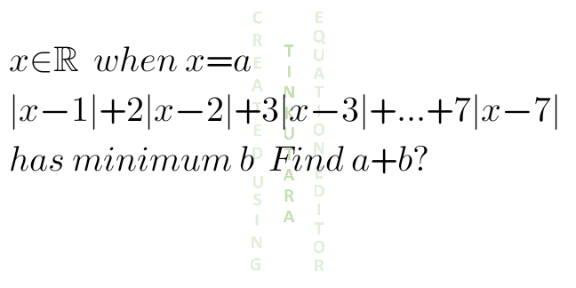
AlgebraQuestion and Answers: Page 223
Question Number 134668 Answers: 1 Comments: 0
Question Number 134627 Answers: 1 Comments: 0
Question Number 134571 Answers: 1 Comments: 0
Question Number 135771 Answers: 0 Comments: 1
Question Number 134467 Answers: 1 Comments: 0
Question Number 134410 Answers: 1 Comments: 2
Question Number 134335 Answers: 1 Comments: 0
Question Number 134331 Answers: 1 Comments: 0
Question Number 134297 Answers: 1 Comments: 0

Question Number 134278 Answers: 0 Comments: 0

Question Number 134277 Answers: 0 Comments: 0

Question Number 134269 Answers: 1 Comments: 0
Question Number 134255 Answers: 2 Comments: 2

Question Number 134237 Answers: 1 Comments: 0
Question Number 134134 Answers: 1 Comments: 0
Question Number 134067 Answers: 1 Comments: 0
Question Number 134061 Answers: 1 Comments: 0
Question Number 134060 Answers: 2 Comments: 0
Question Number 134052 Answers: 1 Comments: 0

Question Number 134034 Answers: 1 Comments: 0
Question Number 134005 Answers: 1 Comments: 0
$${solve}\:{x}^{\mathrm{3}} −\mathrm{2}\lfloor{x}\rfloor=\mathrm{5} \\ $$
Question Number 133996 Answers: 2 Comments: 0
$${show}\:{that}\:\sqrt{\mathrm{2}}<\mathrm{log}_{\mathrm{2}} \:\mathrm{3}<\sqrt{\mathrm{3}} \\ $$
Question Number 133991 Answers: 1 Comments: 0
Question Number 133903 Answers: 0 Comments: 3

Question Number 133885 Answers: 1 Comments: 2
Question Number 133793 Answers: 0 Comments: 1

Pg 218 Pg 219 Pg 220 Pg 221 Pg 222 Pg 223 Pg 224 Pg 225 Pg 226 Pg 227
